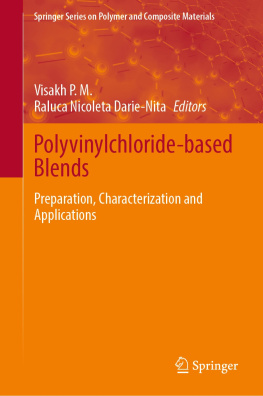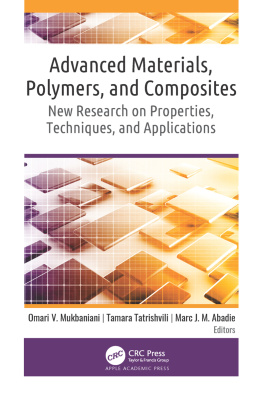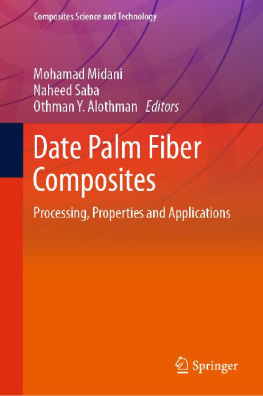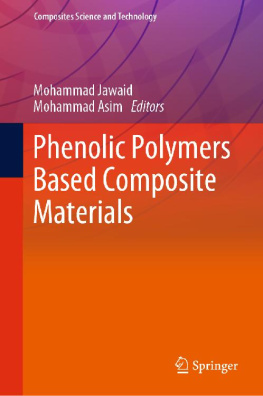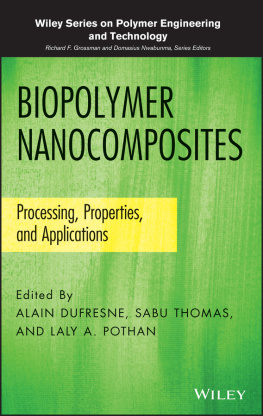
Contents
Guide
List of Tables
- Chapter 4
- Chapter 6
- Chapter 7
- Chapter 8
- Chapter 9
List of Illustrations
- Chapter 3
- Chapter 5
- Chapter 6
- Chapter 7
- Chapter 8
- Chapter 9
Pages
Scrivener Publishing
100 Cummings Center, Suite 541J
Beverly, MA 01915-6106
Publishers at Scrivener
Martin Scrivener ()
Phillip Carmical ()
Soy Protein-Based Blends, Composites and Nanocomposites
Edited by
Visakh P. M
Olga Nazarenko
This edition first published 2017 by John Wiley & Sons, Inc., 111 River Street, Hoboken, NJ 07030, USA and Scrivener Publishing LLC, 100 Cummings Center, Suite 541J, Beverly, MA 01915, USA
2017 Scrivener Publishing LLC
For more information about Scrivener publications please visit www.scrivenerpublishing.com.
All rights reserved. No part of this publication may be reproduced, stored in a retrieval system, or transmitted, in any form or by any means, electronic, mechanical, photocopying, recording, or otherwise, except as permitted by law. Advice on how to obtain permission to reuse material from this title is available at http://www.wiley.com/go/permissions.
Wiley Global Headquarters
111 River Street, Hoboken, NJ 07030, USA
For details of our global editorial offices, customer services, and more information about Wiley products visit us at www.wiley.com.
Limit of Liability/Disclaimer of Warranty
While the publisher and authors have used their best efforts in preparing this work, they make no representations or warranties with respect to the accuracy or completeness of the contents of this work and specifically disclaim all warranties, including without limitation any implied warranties of merchantability or fitness for a particular purpose. No warranty may be created or extended by sales representatives, written sales materials, or promotional statements for this work. The fact that an organization, website, or product is referred to in this work as a citation and/or potential source of further information does not mean that the publisher and authors endorse the information or services the organization, website, or product may provide or recommendations it may make. This work is sold with the understanding that the publisher is not engaged in rendering professional services. The advice and strategies contained herein may not be suitable for your situation. You should consult with a specialist where appropriate. Neither the publisher nor authors shall be liable for any loss of profit or any other commercial damages, including but not limited to special, incidental, consequential, or other damages. Further, readers should be aware that websites listed in this work may have changed or disappeared between when this work was written and when it is read.
Library of Congress Cataloging-in-Publication Data
ISBN 978-1-119-41830-6
Preface
Many of the recent research accomplishments in the area of soy-based blends, composites and bionanocomposites are presented in this book. In addition to introducing soy protein and its structure and relationship properties, an attempt has been made to cover many other relevant topics such as the state-of-the-art, new challenges, advances and opportunities in the field; biomedical applications of soy protein; electrospinning of soy protein nanofibers, their synthesis and applications; soy proteins as a potential source of active peptides of nutraceutical significance; soy protein isolate-based films; and use of soy protein-based carriers for encapsulating bioactive ingredients.
This book is intended to serve as a one-stop reference resource for important research accomplishments in the area of soy protein-based biocomposites and bionanocomposites. It will be a very valuable reference source for university and college faculties, professionals, post-doctoral research fellows, senior graduate students, and researchers from R&D laboratories working in the area of soy protein and its biocomposites and bionanocomposites. Since the various chapters in this book have been contributed by prominent researchers from industry, academia and government/private research laboratories across the globe, it is an up-to-date record of the major findings and observations in the field. The first chapter acts as an introduction to soy protein-based blends, composites and nanocomposites, including their scope, state of the art, preparation methods, environmental concerns regarding nanoparticles and related challenges and opportunities.
Included in the second chapter introducing general aspects of soy proteins, is a discussion of their source, structure and relationship properties. Chemical modification and characterization of soy proteins are also included in this chapter along with a description of the applications of soy protein-based nanocomposites and blends. Advances in soy protein-based nanocomposites are addressed in the third chapter, in which the authors discuss how the incorporation of nanoparticles proves to be an effective way to improve physical properties, especially the mechanical properties and water resistance which limit their extensive use. The properties of the resulting nanocomposites are highly dependent on the processing methods, nature of nanofillers, as well as the dispersion effect of the filler in the matrix. Therefore, the fabrication methods, property-structure relationship, and application of soy protein nanocomposites are also reviewed in this chapter.
The following chapter on applications of soy protein-based blends, composites and nanocomposites discusses many topics, including the particulars of soy protein applications, soy protein-based blends, and those of soy protein-based nanocomposites. The fifth chapter based on biomedical applications of soy protein summarizes many of the recent accomplishments in the area of biomedical research. In this chapter, the authors discuss various topics such as forms and properties of soy proteins, application of plant protein in biomedical applications, application of soy proteins in wound dressings, and the potential use of soy proteins in products and applications in regenerative medicine, tissue engineering, and drug delivery systems.
The following chapter is a good structural basis for the understanding of electrospinning of soy protein nanofibers. Discussed in the chapter are the production of nanofibers from different synthetic and natural polymers, the physical properties of soy proteins that affect their electrospinning, followed by a summary of relevant work that has been done in the area. The chapter closes with a discussion on possible applications of electrospun nanofibers from soy proteins. The use of soy proteins as a potential source of active peptides of nutraceutical significance is the subject of the seventh chapter, which introduces the main concepts along with examples to help readers understand them. This chapter is devoted to reviewing the literature to identify and describe the available methodologies for the identification and production of bioactive peptides from soybean proteins. In addition, potential applications of these peptides as functional foods and therapeutic agents are also highlighted.
The authors of the eighth chapter present a brief account of the topic of soy protein isolate-based films, including soy protein film preparation, characterization of soy protein films, modifications and applications. The last chapter of the book reviews recent progress in the preparation of soy protein-based carriers for bioactive ingredients encapsulation.
Next page

